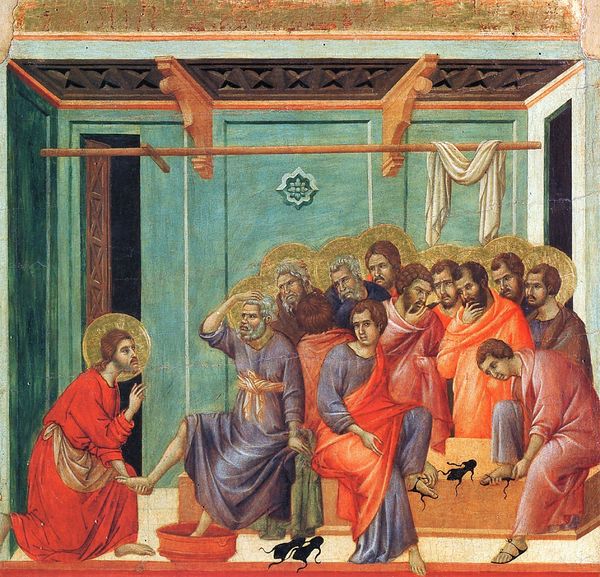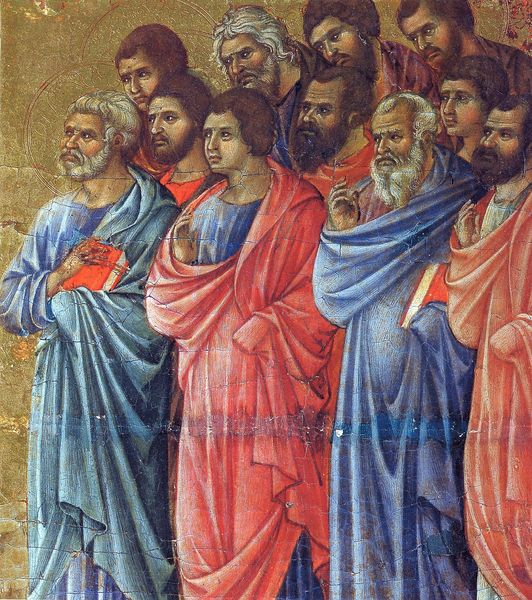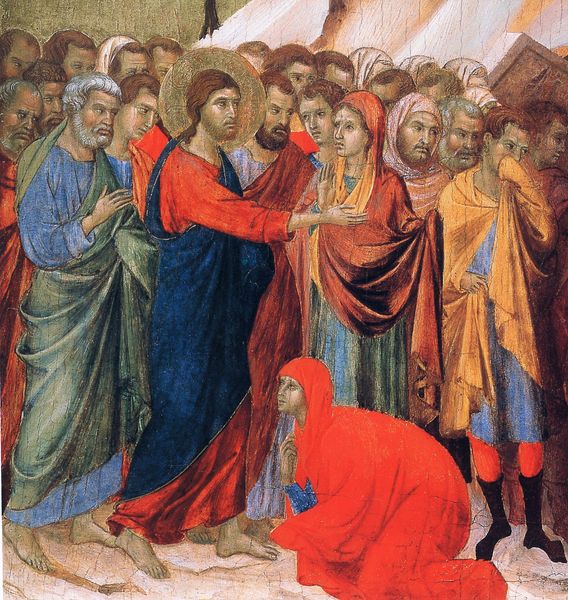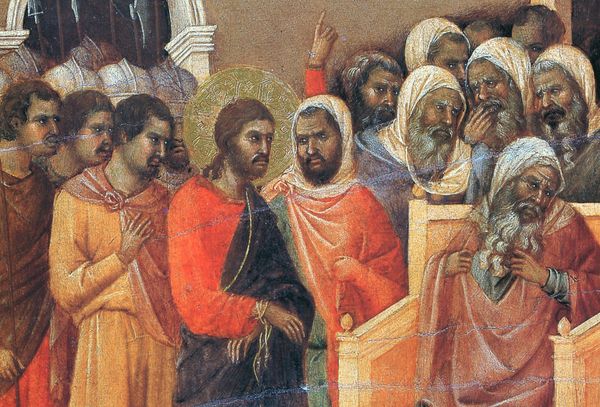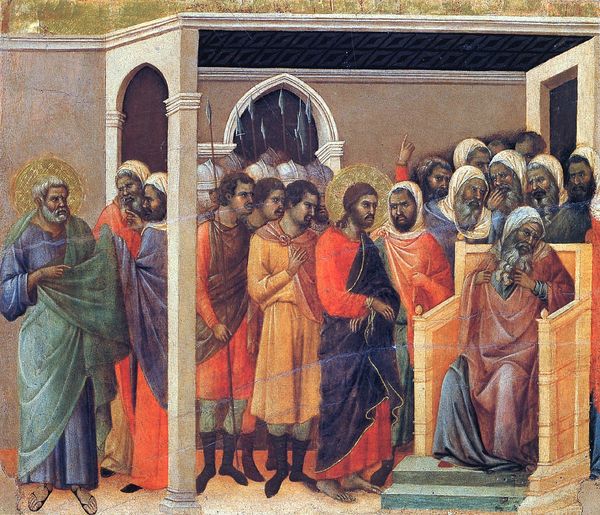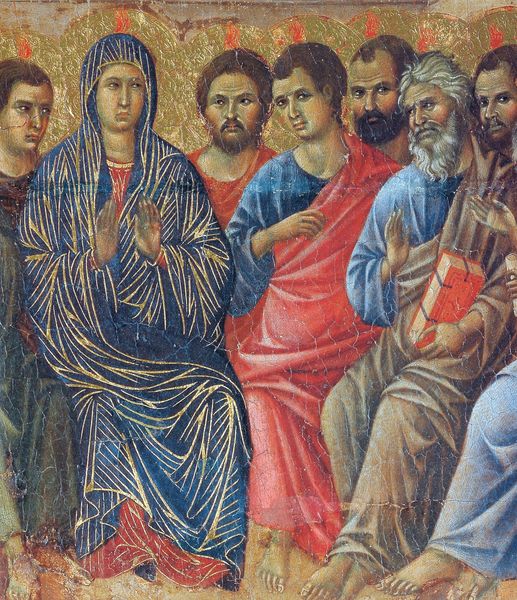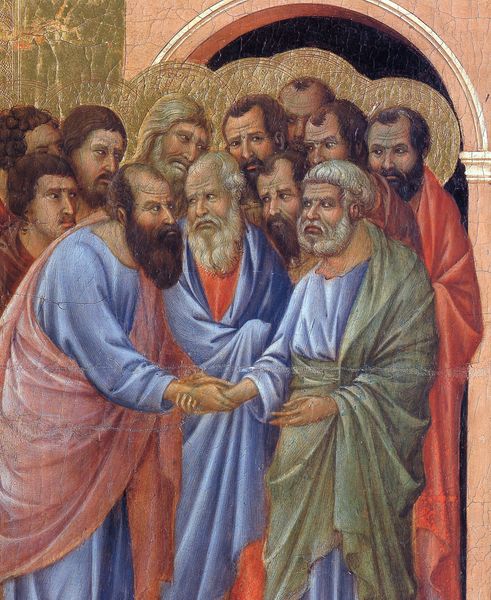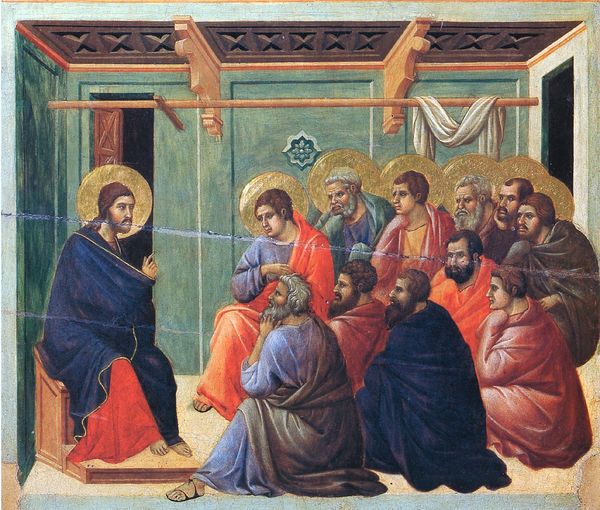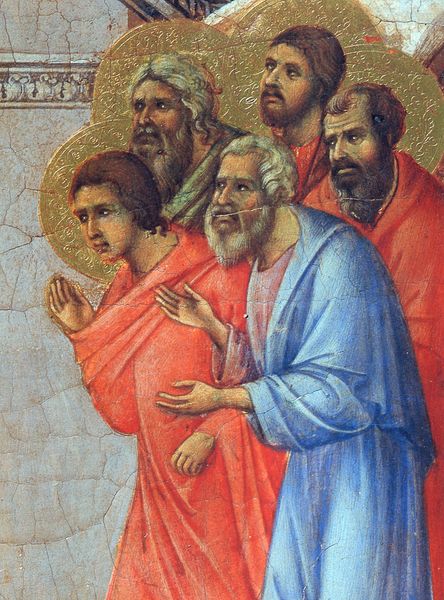
panel, tempera, painting
#
byzantine-art
#
panel
#
narrative-art
#
tempera
#
painting
#
sienese-school
#
oil painting
#
underpainting
#
group-portraits
#
christianity
#
history-painting
#
italian-renaissance
#
portrait art
#
christ
Copyright: Public domain
Curator: Here we have Duccio’s "Washing of Feet (Fragment)", a tempera on panel painting from 1311. Editor: The figures all seem caught between contemplation and consternation. Their faces show a striking range of emotions. Curator: This panel would have originally been part of Duccio’s Maestà altarpiece, commissioned for the Siena Cathedral. Considering the broader scope of the Maestà, the fragment's narrative focus shifts significantly. The ritual of foot-washing, within the context of the Last Supper narrative, symbolizes humility and service. But to Siena at the time, the commissioning of the original altarpiece signaled civic pride, wealth, and the piety of the Republic. Editor: You know, what strikes me most are the rich, jewel-like tones—especially in the drapes. Notice the compositional choice of layering the figures, creating a shallow depth of field, yet each character retains an individuality through subtle variations of pose and expression. Curator: That’s typical of the Sienese School, attempting to bridge the gap between the Byzantine style, characterized by flattened perspective and hieratic forms, and the emerging naturalism of the Italian Renaissance. The altarpiece was paraded through the streets in a great spectacle when it was completed, signifying a collective public devotion and the commune's special relationship with the Virgin Mary. It represented more than just a biblical story. It represented a political investment and expression of civic identity. Editor: And yet, stripped down, it really does command attention as a study of humanity. Even incomplete, you can read so much through his rendering of postures and facial features. The way Duccio modulates the light and shade to suggest three-dimensionality, despite adhering to Byzantine artistic conventions. The work certainly speaks to a turning point in Western painting. Curator: Precisely. Viewing it now, separated from the altarpiece, is an experience far removed from its intended function as an object of veneration, and communal representation, yet the artistry and the history of this panel endures. Editor: I'm struck again by Duccio's remarkable ability to balance formal conventions with emotional depth.
Comments
No comments
Be the first to comment and join the conversation on the ultimate creative platform.
